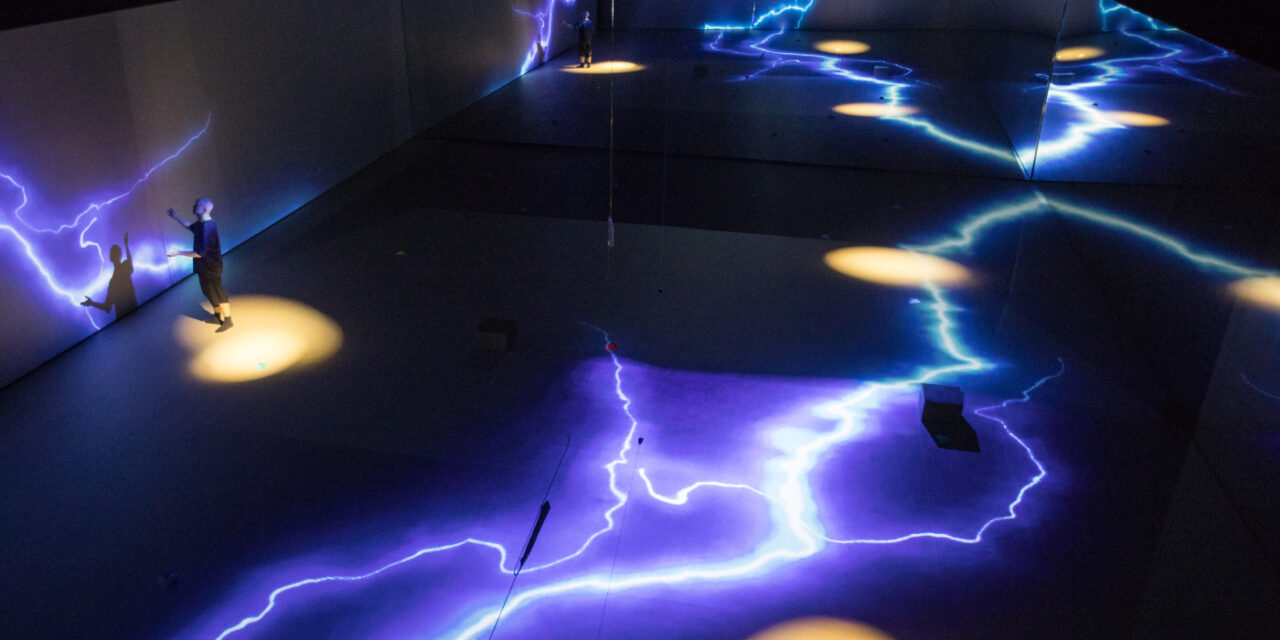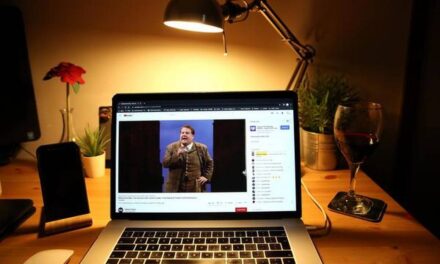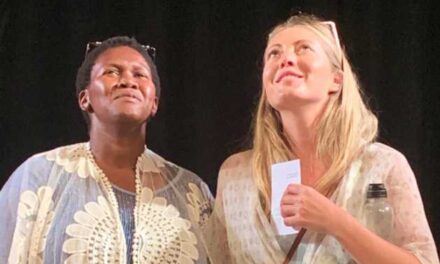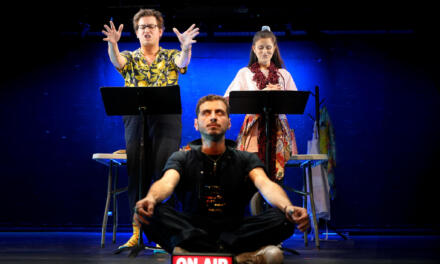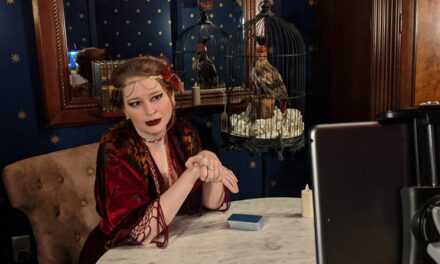In Hong Kong, as elsewhere around the world, Covid-19 brought live shows to an abrupt halt. Although they are already returning as physical distancing measures are relaxed, what has become clear is that the past year has changed the way companies and performers approach their craft – and how performers relate to their audiences. The question now is to what extent these changes will live beyond the pandemic.
For many, the restrictions of the past year have been a stimulus for trying new things. “The pandemic has been a wakeup call making us conscious about how technology affects our life,” says Mathias Woo, co-artistic director of Hong Kong’s leading experimental performance group, Zuni Icosahedron. “Imagine a lockdown without technology – we wouldn’t have been able to communicate. It would have been completely different psychologically and physically.”
What is most striking are the many different ways in which technology has been adopted – either as a tool or as a source of ideas. Smaller companies were the first to react. Last April, when the pandemic was still being counted in weeks rather than months, playwright Yan Pat To saw Zoom as a way to revive his play How to present Love life of Hong Kong people to Aliens? with an online adaptation. As schools suddenly found themselves having to use the internet to deliver classes, he says, “That was the perfect format for a play whose protagonist is a secondary school teacher.” Moving the show online also allowed him to broaden the play’s reach, adding drone footage and a collaboration with Taiwanese visual artist Chiu Chihhua to the performance.
Contemporary dance choreographer and performer Joseph Lee similarly saw video conferencing software as a way of staying in touch with his audience. “As we couldn’t perform, we decided to show our rehearsals instead,” he says. “We put several cameras around our rehearsal space so people could watch us via Zoom. They could choose the angle they wanted, comment on what they were seeing and talk to us.” Exploring the possibilities of video led from one thing to another. “Showing our rehearsals was a great chance to let people learn about our methodology as artists. We found ourselves becoming much more flexible in the way we produced work, both offline and online.”
Bigger companies reacted more slowly at first. “The initial focus of our digital content was on interactive behind-the-scenes content,” says Septime Webre, Hong Kong Ballet’s artistic director. “We reasoned that we’d be back on stage soon, so our main priority was ensuring we stayed engaged [with] our stakeholders and our community.” As it became clearer that the pandemic was going to last many months, however, the company switched to producing a large-scale program of digital content. So far, it has created more than 75 distinct new video pieces, among them interactive barre classes audience members can do at home, a podcast series, a Ballerina Chef series, Ballet Classroom—an edu-tainment series for kids—and, culminating in the launch last week of its virtual Turn(it)out Festival, four main-stage productions and a host of interactive fringe behind-the-scenes activities, all available online for free until April 14.
More than 1.2 million people have viewed these videos so far, many times the total audience 62,000 who attended the company’s Hong Kong productions in 2019. “The reach has been massive,” says Webre. Of course, he wants stage productions again to be the company’s mainstay as soon as possible. But for the future, he says, “We’ll continue to operate in the digital arena, producing interactive video content and occasional dance micro-films. We’re also planning to capture on camera our live performances in a more sophisticated way and partner with various international platforms to stream these performances for international audiences – a significant silver lining during these difficult times.”
Alison Friedman, artistic director for performing arts at West Kowloon Cultural District, also sees an extended role for video arising directly from her experience of the last year. “One discovery we’ve made that we’ll definitely be taking forward in the future is using high-speed internet for online collaborations between performers.” That can be live, as happened during last autumn’s JazzFest at the Freespace contemporary performance center with a jam between musicians in Hong Kong, Taiwan and Zurich jam. Or even more constructively to bring artists together before shows: “We all know how resource-heavy it is to fly artists in from different regions. With rushed schedules, often they barely get into the groove before their time is up. Imagine how much more productive the time on-site together will be with weeks or even months of preparation online before meeting in person.”
Extending the use of video has its risks, however. First, there are the resources and expertise that are called for. For companies whose entire history has centered on putting on a stage show in a theatre, turning to film poses aesthetic and technical questions that they have never had to address before, above all the difficulties involved in transforming the visceral experience of a live performance into something that’s worth watching on a screen.
There are also the issues of what exactly should be made available and how. Earlier this month, City Contemporary Dance Company put up an on-demand online showing of one of its most memorable performances of recent years, Mr Blank, by the company’s resident choreographer, Sang Jijia. Originally due to be staged at Freespace in December, then rescheduled for February, instead of canceling its run the company opted to make a “screendance” version instead. Working in the piece’s favor was its subject—an investigation of surveillance using multiple cameras—and the fact that experimental works encourage new approaches. Yet access to the video was restricted to a fifteen-day period in the first half of March with an HK$80 payment for an e-ticket.
Though it’s easy to understand why companies fall back on familiar, traditional models to present their works, it’s hard to see how such models can be applied on the internet. That’s because of the enormous competition that now exists online, from the easy and low-cost access to shows by the world’s best arts companies, such as the UK’s Royal Shakespeare Company or Russia’s Bolshoi Ballet, through the streaming media that is now part of nearly everyone’s life, to all the free performance and other snippets used to fill Instagram and Facebook feeds.
“Mr Blank” Screendance Version Making Of – CDDC Art Channel
One thing this means, says Eddy Zee, head of performing arts at Tai Kwun, is that audiences, especially after spending more time than ever before online in the last year, want a greater range of experiences. “It can’t just be about performances anymore,” he says. Instead, performers are going to have to look at the various different ways they can now engage with audiences across a show’s life. Here, the halt bought by the pandemic can help. “Now’s an opportunity to kick-start a lot of new things that can blossom when things get back to normal,” says Zee, pointing as an example of what this means to 14 work-in-progress projects in dance, theatre and music that Tai Kwun is now running with small groups and individuals. “Each has to make a presentation about what they’re doing, either online or somewhere in Tai Kwun” – partly as part of the new kinds of relationship now forming between performers and members of their audience, and partly as a result of the resulting movement away from the traditional emphasis on only showing finished works that’s arising as a result of this.
For groups whose existence until recently centered on producing a new piece of work every few or three months, this suggests a different future. New areas have to be explored and new resources found to support and develop those explorations. The risk is that now that this digital presence will take on a life of its own – putting a greater emphasis on work in progress that many have turned to in the last year; requiring companies to have a permanent body of work available online; and tilting power towards audiences who at the swipe of a finger can switch their attention elsewhere.
West Kowloon’s Friedman sees things similarly. “One of the concepts we’re exploring is ‘Freespace anywhere, Freespace any time,’ meaning you don’t need to physically come to our building to have a creative experience,” she says. Among the projects is an initiative that calls for artists in the UK and Hong Kong to mail “creative-care packages” to participant’s homes, with everyone then coming together online to follow instructions and assemble something. “We don’t want our audiences passively watching a screen, so this care-package experience is a way to get people [to] actively participate in the creative process from the safety of their own home while having a shared experience through the internet at the same time,” she says.
Friedman is also commissioning a number of new theatrical pieces by Hong Kong-based artists aimed at pushing the boundaries of “live” performance – and the very meaning of the stage itself. Among them a work with remote interaction with robots and a “theatre of the subconscious” in which participants have their dreams interrupted: “A show that could happen anywhere you’re comfortable enough to fall asleep,” she says.
The fragmentation of attention accompanying the rise of social media lies at the heart of Joseph Lee’s latest work, Unfolding Images: We Are Spectacle(s), to be presented in April as part of Tai Kwun’s Spotlight performing arts season. In it, Lee and his fellow performers explore ways of watching and being watched, looking at how social media’s center of attention switches from one thing to another at a moment’s notice.
Yan Pat-to certainly embraces such an approach. His latest work, A Poem in Jail, another item in next month’s Spotlight season, is set in Hong Kong in the 1980s and 1997 – a period, like now, of great uncertainty. Mixing live performance, imagery, sound, a media installation and videos presented to an audience that moves across several locations in Tai Kwun, the fragments of his show offer both a collage of experiences and a nod to a time when “the sense of uncertainty is overwhelming,” says Yan.
At first glance, neither piece appears to be directly shaped by Covid-19. But both are responses to the new forms of performance the pandemic has accelerated – embracing technology as part of their toolkits to engage with their audiences, exploring our ever-more splintered encounters with culture. By bringing live shows to a halt, Covid-19 has forced artists and companies to look at new ways of doing things and showing their work, in turn giving audiences new ways of experiencing performances.
When the coronavirus eventually fades, the digital resources individual artists and companies have drawn on will remain as ongoing elements of artistic practice – tools to be used in performing, showing those performances, and extending and changing the relationship between performers and audiences by bringing them closer together than ever before. Collaboration over the internet, both long-distance and local will increase, and performers and performing groups will be more accessible. both with more contact via social media and by offering far more archive and other video material – probably for free.
And will all this undermine the focus on the finished piece that has long dominated cultural production? Not for certain kinds of shows. It’s hard to imagine Hong Kong Ballet ever abandoning its Christmas performances of The Nutcracker. But quite possibly for other types of work – replaced perhaps with a greater emphasis on works in progress, the revisiting of older works via archives, and greater audience participation in more types of show.
“We weren’t prepared for what’s happened,” says Mathias Woo. “But we’ve been testing streaming ideas for the last ten years, so to see other people adopt what we’ve been doing when the pandemic came – that’s cool.”
Photos in slider: “A Poem in Jail” (Taikwun), “Bach is Heart Sutra” (Zuni Icosahedron), “Turn it Out Festival: The Orpheus Cabaret” (Hong Kong Ballet), “Mr Blank” (CDDC) Screendance Version.
Upcoming performances in Spring 2021
Yan Pat-to, A Poem in Jail, Reframe Theatre Company, Tai Kwun, May 7–16
Joseph Lee, Unfolding Images: We Are Spectacle(s), Tai Kwun, April 2–4
Zuni Icosahedron, Bach is Heart Sutra, April 23–24, May 8–15
Hong Kong Arts Festival 2021, until March 30
Hong Kong Ballet, turn(it)out festival, until April 4
This article was originally posted on zolimacitymag.com on March 25, 2021, and has been reposted with permission. To see the original, click here.
This post was written by the author in their personal capacity.The opinions expressed in this article are the author’s own and do not reflect the view of The Theatre Times, their staff or collaborators.
This post was written by Simon Cartledge.
The views expressed here belong to the author and do not necessarily reflect our views and opinions.

